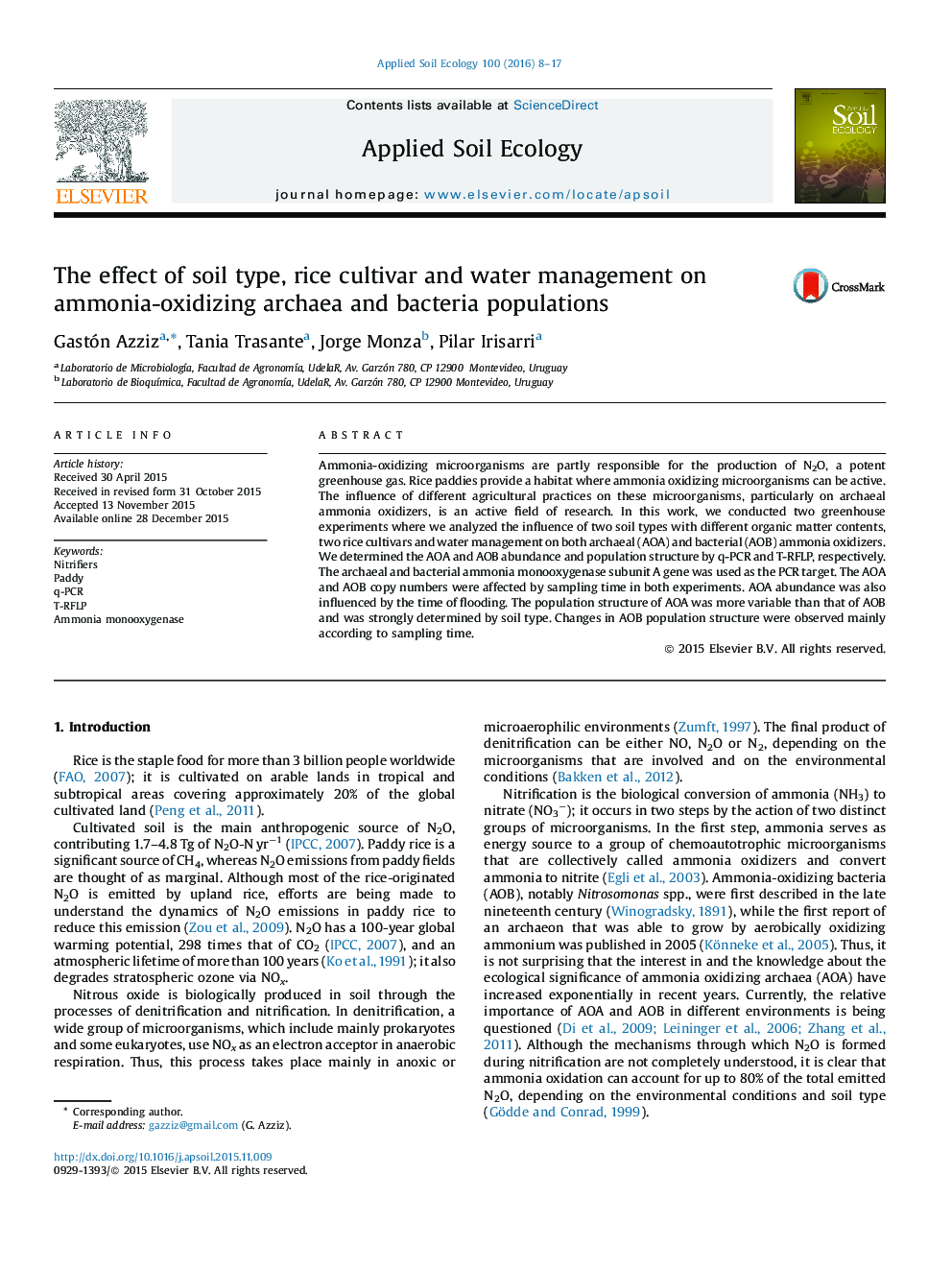| کد مقاله | کد نشریه | سال انتشار | مقاله انگلیسی | نسخه تمام متن |
|---|---|---|---|---|
| 4381797 | 1617783 | 2016 | 10 صفحه PDF | دانلود رایگان |
• Soil type is the main factor shaping ammonia oxidizers population structure.
• AOA population structure is more sensitive than AOB to soil type.
• AOA abundance is sensitive to the time of flooding.
• AOB abundance and population structure is sensitive to the sampling time.
Ammonia-oxidizing microorganisms are partly responsible for the production of N2O, a potent greenhouse gas. Rice paddies provide a habitat where ammonia oxidizing microorganisms can be active. The influence of different agricultural practices on these microorganisms, particularly on archaeal ammonia oxidizers, is an active field of research. In this work, we conducted two greenhouse experiments where we analyzed the influence of two soil types with different organic matter contents, two rice cultivars and water management on both archaeal (AOA) and bacterial (AOB) ammonia oxidizers. We determined the AOA and AOB abundance and population structure by q-PCR and T-RFLP, respectively. The archaeal and bacterial ammonia monooxygenase subunit A gene was used as the PCR target. The AOA and AOB copy numbers were affected by sampling time in both experiments. AOA abundance was also influenced by the time of flooding. The population structure of AOA was more variable than that of AOB and was strongly determined by soil type. Changes in AOB population structure were observed mainly according to sampling time.
Journal: Applied Soil Ecology - Volume 100, April 2016, Pages 8–17
